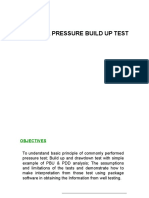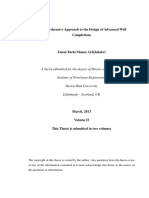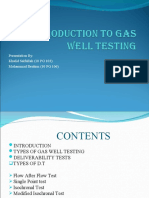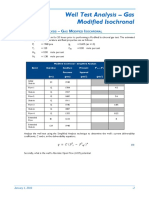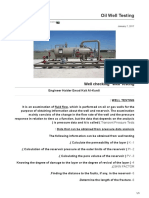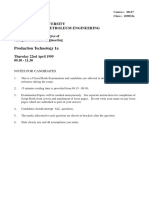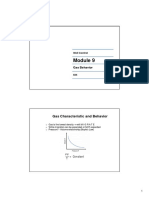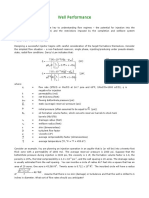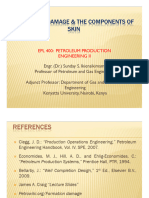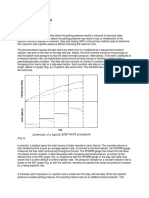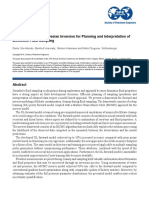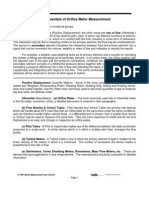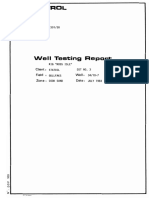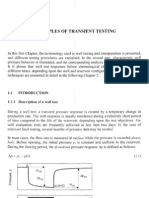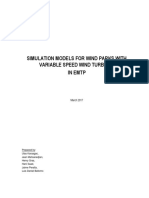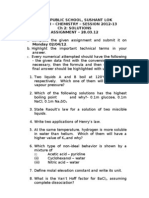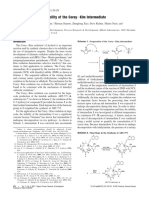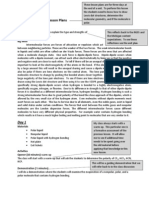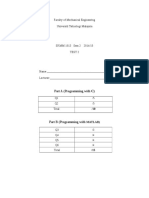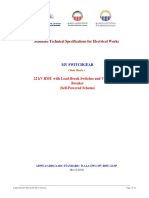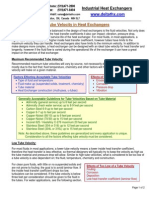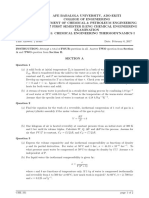0% found this document useful (0 votes)
408 views15 pagesIdentification of Well Problems Using Well Testing
This document discusses identification of well problems using well testing. It begins with an introduction that explains well testing is used to gather data on reservoir properties like permeability and pressure. It then describes different types of well tests including pressure build-up tests, injection/fall-off tests, multi-rate tests, multiple well tests, and closed chamber tests. Each test type is briefly explained. The document concludes by stating well tests can be used to estimate parameters like flow conductance, skin factor, non-Darcy coefficient, and fractured reservoir parameters.
Uploaded by
عبدالله عبدالله المصراتيCopyright
© © All Rights Reserved
We take content rights seriously. If you suspect this is your content, claim it here.
Available Formats
Download as DOCX, PDF, TXT or read online on Scribd
0% found this document useful (0 votes)
408 views15 pagesIdentification of Well Problems Using Well Testing
This document discusses identification of well problems using well testing. It begins with an introduction that explains well testing is used to gather data on reservoir properties like permeability and pressure. It then describes different types of well tests including pressure build-up tests, injection/fall-off tests, multi-rate tests, multiple well tests, and closed chamber tests. Each test type is briefly explained. The document concludes by stating well tests can be used to estimate parameters like flow conductance, skin factor, non-Darcy coefficient, and fractured reservoir parameters.
Uploaded by
عبدالله عبدالله المصراتيCopyright
© © All Rights Reserved
We take content rights seriously. If you suspect this is your content, claim it here.
Available Formats
Download as DOCX, PDF, TXT or read online on Scribd
/ 15















